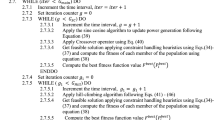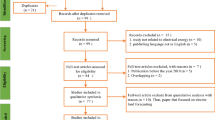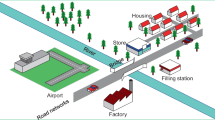Abstract
In this paper, we studied the aggregation techniques for power capacity expansion problems. Combining a growing demand for green energy with a hard constraint on demand satisfaction causes system flexibility to be a major challenge in designing a stable energy system. To determine both the need for flexibility and which technologies that could satisfy these needs at minimum cost, the system should be analyzed on an hour-by-hour scale for a long period of time. This often leads to computationally intractable problems. One way of getting more tractable models is to aggregate the time domain. Many different aggregation techniques have been developed, all with a common goal of selecting representative time slices to be used instead of the full time scale, gaining a problem size reduction in the number of variables and/or constraints. The art of aggregation is to balance the computational difficulty against the solution quality, making validation of the techniques crucial. We propose new aggregation techniques and compare these to each other and to a selection of aggregation techniques from the literature. We validate the aggregated problems against the non-aggregated problems and look into the sensitivity of the performance of the aggregation techniques to different data sets and to the selection of different element types. Our analysis shows that aggregation techniques can be used to achieve very good solutions in a short amount of time, and that simple aggregation techniques achieve good performance similar to that of techniques with higher complexity. Even though the aggregation techniques in this paper are applied to power capacity expansion models, the methodology can be used for other problems with similar time dependence, and we believe that results in agreement with the results seen here, would be achieved.






Similar content being viewed by others
Notes
Initially we included an element in the block, if the inclusion did not change the mean of the block with more than a value \(\mathbb {Y}\). However, this had the disadvantage that very different elements potentially were grouped together if a slow decreasing/increasing period of elements was located between them.
References
Bahl B, Kümpel A, Lampe M, Bardow A (2016) Time-series aggregation for synthesis of distributed energy supply systems by bounding error in operational expenditure. Comput Aided Chem Eng 38:793–798
Chen Q, Kang C, Xia Q, Zhong J (2010) Power generation expansion planning model towards low-carbon economy and its application in China. IEEE Trans Power Syst 25(2):1117–1125
de Sisternes Fernando J (2013) Investment model for renewable electricity system (IMRES): an electricity generation expansion formulation with unit commitment constraints. MIT Center for Energy and Environmental Policy Research, 1–14. https://pdfs.semanticscholar.org/3f98/93f7288e62590c6e390276679336eb970a92.pdf
de Sisternes Fernando J, Webster MD (2013) Optimal selection of sample weeks for approximating the net load in generation planning problems. Massachusetts Institute of Technology. Engineering Systems Division, 1–13. http://hdl.handle.net/1721.1/102959
de Sisternes FJ, Webster MD, Pérez-Arriaga IJ (2015) The impact of bidding rules on electricity markets with intermittens renewables. IEEE Trans Power Syst 30(3):1603–1613
EIA Energy Information Administration (2013) The electrivity market module of the national energy modeling. system model documentation 2013. EIA, U.S. Department of Energy, Washington, DC, Tech.rep. http://www.eia.gov/outlooks/aeo/nems/documentation/electricity/pdf/m068(2013).pdf
Energinet.dk (2019) Markeds data. http://osp.energinet.dk/_layouts/Markedsdata/framework/integrations/markedsdatatemplate.aspx
Falcon N, Gil E (2007) Appendix G3 capacity expansion planning for the New Zealand electricity market. Report to Transpower- J1520 Draft Report. https://www.ea.govt.nz/dmsdocument/4454
Fortmann-Roe S (2012) Understanding the bias-variance trade-off
Fripp M (2012) Switch: a planning tool for power systems with large shares of intermittent renewable energy. Environ Sci Technol 46(11):6371–6378
Green R, Staffell I, Vasilakos N (2014) Divide and conquer? K-means clustering of demand data allows rapid and accurate simulations of the British electricity system. IEEE Trans Eng Manag 61(2):251–260
Haller M, Ludig S, Bauer N (2012) Decarbonization scenarios for the EU and MENA power system: considering spatial distribution and short term dynamics of renewable generation. Energy Policy 47(30):282–290
Hartigan JA, Wong MA (1979) Algorithm as 136: a k-means clustering algorithm. Appl Stat 28(1):100–108
IRENA (2017) Planning for the renewable future: long-term modelling and tools to expand variable renewable power in emerging economies. Int Renew Energy Agency, 1–132. http://www.irena.org/DocumentDownloads/Publications/IRENA_Planning_for_the_Renewable_Future_2017.pdf
Kassambara A (2017) Practical guide to cluster analysis in R-unsupervised machine learning. STHDA
Kudovere H, Buchholz S, Ravn H (2017) Constructing aggregated time seried data for energy system model analysis. DTU-Orbit, Technical report. http://orbit.dtu.dk/en/publications/constructing-aggregated-time-series-data-for-energy-system-model-analyses(801686ed-c2bc-4995-b28a-d054b2277899).html
Liu Y, Sioshansi R, Conejo AJ (2017) Hierarchical clustering to find representative operating periods for capacity-expansion modeling. IEEE Trans Power Syst 33(3):3029–3039
Ludig S, Haller M, Schmid E, Bauer N (2011) Fluctuating renewables in a long-term climate change mitigation strategy. Energy 36(43):6674–6685
Lythcke-Jørgensen CE, Münster M, Ensinas AV, Haglind F (2016) A method for aggregating external operating conditions in multi-generation system optimization models. Appl Energy 166(5):59–75
Salama M, ElNozah M, Seethapathy R (2013) A probabilistic load modelling approach using clustering algorithms. IEEE Power Energy Soc Gen Meet. https://doi.org/10.1109/PESMG.2013.6672073
Merrick JH (2016) On representation of temporal variability in electricity capacity planning models. Energy Econ 59(19):261–274
Munoz FD, Mills AD (2015) Endogenous assessment of the capacity value of solar pv in generation investment planning studies. Trans Sustain Energy 6(4):1574–1585
Nahmmacher P, Schmid E, Hirth L, Knopf B (2016) Carpe diem: a novel approach to select representative days for long-term power system models with high shares of renewable energy sources. Energy 112(39):430–442
Nicolos M, Mills A, Wiser R (2011) The importance of high temporal resolution in modeling renewable energy penetration scenarios. In: 9th Conference on applied infrastructure research, TU Berlin, Berlin, 8–9 Oct 2010. http://escholarship.org/uc/item/9rh9v9t4
Nweke CI, Leanez F, Drayton GR, Kolhe M (2012) Benefits of chronological optimization in capacity planning for electricity markets. IEEE Power Syst Technol Conf Pap (POWERCON 2012). https://doi.org/10.1109/PowerCon.2012.6401421
Ministry of Foreign Affairs of Denmark (2019) Independent from fossil fuels by 2050. http://denmark.dk/en/green-living/strategies-and-policies/independent-from-fossil-fuels-by-2050
Poncelet K, Delarue E, Six D, Dueinck J, D’haeseleer W (2015) Impact of the level of temporal and operational detail in energy-system planning models. Appl Energy 162(58):631–643
Poncelet K, Hoschle H, Delarue E, Virag A, D’haeseleer W (2016) Selecting representative days for capturing the implications of integrating intermittent renewables in generation expansion problems. IEEE Trans Power Syst 99:1–1
Rogers DF, Plante RD, Wong RT, Evans JR (1991) Aggregation and disaggregation techniques and methodology in optimization. Oper Res 39(4):553–582
Samsatli S, Samsatli NJ (2015) A general spatio-temporal model of energy systems with a detailed account of transport and storage. Comput Chem Eng 80(13):155–176
Short W, Sullivan P, Mai T, Mowers M, Uriarte C, Blair N, Heimiller D, Martinez A (2011) Regional energy deployment system (ReEDS). NREL, Tech.rep. https://doi.org/10.2172/1031955
Ueckerdt F, Brecha R, Luderer G (2015) Analyzing major challenges of wind and solar variability in power systems. Renew Energy 81(1):1–10
Ueckerdt F, Brecha R, Luderer G, Sullivan P, Schmid E, Bauer N, Böttger D, Pietzcker R (2015) Representing power sector variability and the integration of variable renewables in long-term energy-economy models using residual load duration curves. Energy 90(part 2(56)):1799–1814
Author information
Authors and Affiliations
Corresponding author
Additional information
Publisher's Note
Springer Nature remains neutral with regard to jurisdictional claims in published maps and institutional affiliations.
This invited paper is discussed in the comments available at https://doi.org/10.1007/s11750-019-00520-6, https://doi.org/10.1007/s11750-019-00521-5, https://doi.org/10.1007/s11750-019-00522-4, https://doi.org/10.1007/s11750-019-00526-0
Appendices
Terminology
Nomenclature
- AT:
-
Aggregation technique
- BS:
-
Benchmark solution
- CA:
-
Cluster analysis
- CC:
-
Cluster cluster
- CCGT:
-
Combined cycle gas turbine
- CDC:
-
Correlation duration curve
- CEMUC:
-
Capacity expansion model with unit commitment
- DB:
-
Dynamic blocking
- DC:
-
Duration curve
- DX:
-
Dummy selection
- ES:
-
Exhaustive search
- GS:
-
Grouping strategies
- HC:
-
Hierarchical clustering
- HS:
-
Heuristic selection
- IS:
-
Investment selection
- LC:
-
Level-correlation cluster
- LDC:
-
Load duration curve
- MILP:
-
Mixed integer linear program
- NGS:
-
Non-grouping strategies
- NRMSE:
-
Normalized root mean square error
- OA:
-
Optimized RLDC approximation
- OCGT:
-
Open cycle gas turbine
- OPT:
-
Optimization
- OS:
-
Optimal criteria selection
- PC:
-
Partitioning clustering
- PI:
-
Performance index
- PV:
-
Photovoltaics
- RDC:
-
Ramping duration curve
- RL:
-
RLDC selection
- RLC:
-
Residual load curve
- RLDC:
-
Residual load duration curve
- SC:
-
Single cluster
- SR:
-
Statistical representation
- UC:
-
Unit commitment
- VRE:
-
Variable renewable energy
Supplements to the literature review
See Tables 21, 22 and 23 in appendix.
Supplements to the test cases results
See Table 24 in Appendix.
Aggregation performance
See Tables 25, 26 and Figs. 7, 8 in appendix.
Rights and permissions
About this article
Cite this article
Buchholz, S., Gamst, M. & Pisinger, D. A comparative study of time aggregation techniques in relation to power capacity expansion modeling. TOP 27, 353–405 (2019). https://doi.org/10.1007/s11750-019-00519-z
Published:
Issue Date:
DOI: https://doi.org/10.1007/s11750-019-00519-z
Keywords
- Domain reduction
- Time aggregation
- Power system planning
- Capacity expansion
- Solution time and quality balance
- Validation






